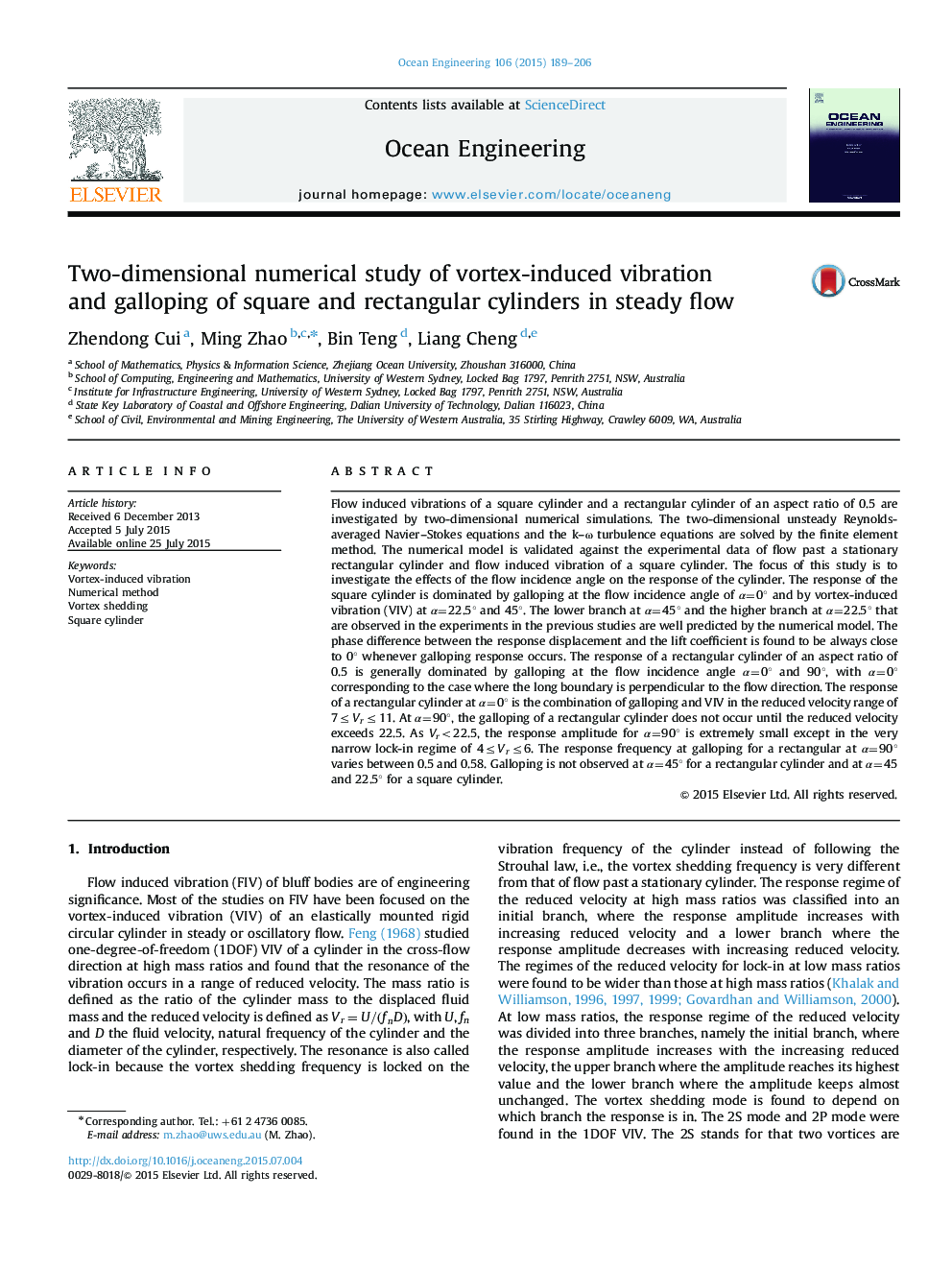| Article ID | Journal | Published Year | Pages | File Type |
|---|---|---|---|---|
| 1725257 | Ocean Engineering | 2015 | 18 Pages |
Abstract
Flow induced vibrations of a square cylinder and a rectangular cylinder of an aspect ratio of 0.5 are investigated by two-dimensional numerical simulations. The two-dimensional unsteady Reynolds-averaged Navier-Stokes equations and the k-Ï turbulence equations are solved by the finite element method. The numerical model is validated against the experimental data of flow past a stationary rectangular cylinder and flow induced vibration of a square cylinder. The focus of this study is to investigate the effects of the flow incidence angle on the response of the cylinder. The response of the square cylinder is dominated by galloping at the flow incidence angle of α=0° and by vortex-induced vibration (VIV) at α=22.5° and 45°. The lower branch at α=45° and the higher branch at α=22.5° that are observed in the experiments in the previous studies are well predicted by the numerical model. The phase difference between the response displacement and the lift coefficient is found to be always close to 0° whenever galloping response occurs. The response of a rectangular cylinder of an aspect ratio of 0.5 is generally dominated by galloping at the flow incidence angle α=0° and 90°, with α=0° corresponding to the case where the long boundary is perpendicular to the flow direction. The response of a rectangular cylinder at α=0° is the combination of galloping and VIV in the reduced velocity range of 7â¤Vrâ¤11. At α=90°, the galloping of a rectangular cylinder does not occur until the reduced velocity exceeds 22.5. As Vr<22.5, the response amplitude for α=90° is extremely small except in the very narrow lock-in regime of 4â¤Vrâ¤6. The response frequency at galloping for a rectangular at α=90° varies between 0.5 and 0.58. Galloping is not observed at α=45° for a rectangular cylinder and at α=45 and 22.5° for a square cylinder.
Related Topics
Physical Sciences and Engineering
Engineering
Ocean Engineering
Authors
Zhendong Cui, Ming Zhao, Bin Teng, Liang Cheng,
